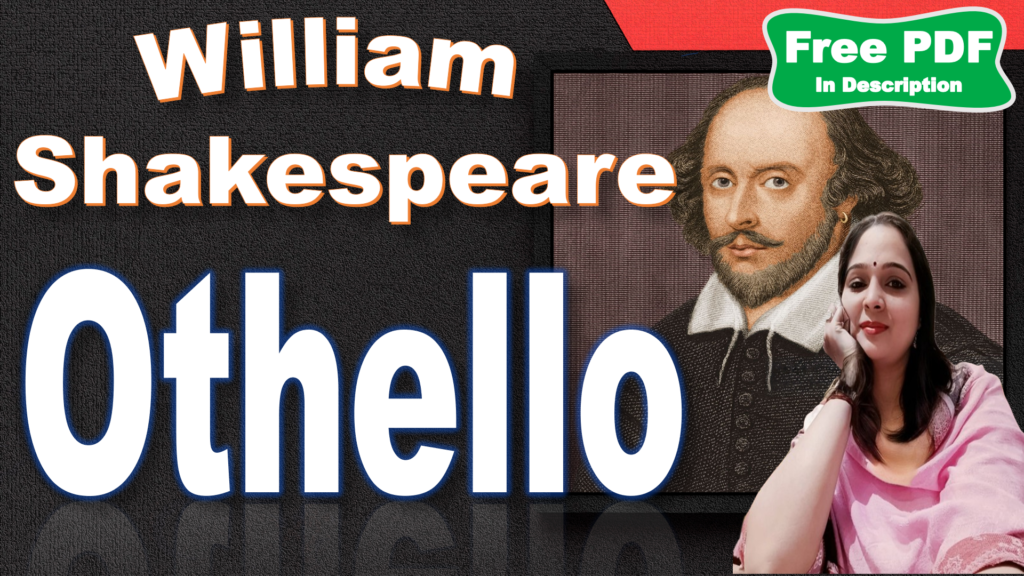
Historical Context
Shakespeare’s Othello, written in the early 1600s, is influenced by various historical and cultural elements of the time, including the status of the Moors, the significance of Venice and Cyprus, the theater scene in England, and the roles of women in Elizabethan society. Understanding these contexts helps to explain the play’s themes, characters, and conflicts.
The Moors
The Moors were people from North Africa, likely of Berber and Arab descent. In the 8th century, they conquered the Iberian Peninsula, which includes modern-day Spain and Portugal, introducing the Islamic religion to the region, which had been mostly Christian. The Moors ruled parts of the peninsula for about 700 years before being pushed out in 1492, the same year Christopher Columbus set sail for the Americas.
The word “Moor” comes from Greek and Latin terms meaning “black” or “dark.” While some sources describe the Moors as light-skinned Berbers, others use the term to refer to people of the Muslim faith, regardless of appearance. The names of modern countries like Morocco and Mauritania are derived from the word “Moor.”
Venice
Venice, a powerful city-state during the Renaissance, was a major center of trade, wealth, and military power. By the 12th century, Venice had a strong navy and became the richest city in Europe, controlling trade routes between Europe and the East. It was ruled by powerful Venetian families and was known for its religious tolerance, despite being a Christian republic.
Venice’s role in Othello reflects its significance as a political and military force. Othello, a respected general in the Venetian army, is valued for his skills, but his position is complicated by his outsider status. Venice’s multicultural environment and military focus are key to the setting of the play, especially as it transitions to the island of Cyprus, where much of the action occurs.
Cyprus
Cyprus, the third-largest island in the Mediterranean, has long been contested by various empires due to its strategic location. By the time Shakespeare wrote Othello, Cyprus had been under Venetian control since 1489, after the queen of Cyprus gave up her throne to Venice. However, in 1571, the island was captured by the Ottoman Turks after a series of battles.
In Othello, Cyprus serves as the backdrop for much of the play’s tension and conflict. Othello is sent to defend the island from the Turkish threat, which mirrors the real historical battles between Venice and the Ottoman Empire. The isolated setting of Cyprus heightens the personal drama, as Othello’s jealousy and Iago’s schemes unfold away from the political center of Venice.
Elizabethan Theatre
During Shakespeare’s time, theater was one of the most popular forms of entertainment in England. Acting troupes, often sponsored by noblemen, performed plays for both common people and the upper class. However, theaters were often seen as rowdy places, and there were concerns about public gatherings spreading disease and encouraging immoral behavior.
Shakespeare’s plays were performed at famous theaters like The Globe, an open-air theater where audiences from different social classes could watch performances. The Globe had a standing area called the “pit” where the poorest people watched, while wealthier viewers sat in covered sections.
The Elizabethan theater had no actresses, so young boys played female roles like Desdemona. Costumes were elaborate, but there was little focus on scenery, as the language and acting carried the performance. Shakespeare’s language in Othello reflects this style, using vivid imagery, symbolism, and complex characters to engage the audience.
Elizabethan Women
In Elizabethan England, women had limited rights and were expected to be obedient to their husbands and fathers. They could not vote, attend school, or work in most professions. Women’s primary roles were to marry, have children, and manage the household. The idea that men were superior to women was widely accepted, and women were seen as needing male guidance and protection.
This societal view of women is evident in Othello. Desdemona, for example, is expected to be loyal and submissive to her husband, Othello, even when he accuses her unjustly. Emilia, Iago’s wife, also reflects the limited power of women, as she follows her husband’s orders despite her suspicions. The play explores the consequences of these strict gender roles, particularly the vulnerability of women like Desdemona, who become victims of the jealousy and control of the men around them.
Critical Overview
The critical overview of Othello presents a rich and nuanced exploration of the play’s themes, characters, and its historical and cultural significance.
1. Historical and Cultural Impact
Othello, first produced in 1604, has had a profound and often controversial impact on theater, particularly concerning its representation of race. Historically, the portrayal of Othello—a black man in a position of power and dignity—was groundbreaking for its time.
Ira Aldridge: The first black actor to play Othello, Aldridge’s performances were monumental, especially since he performed in Europe and not his native United States due to racial prejudice. He broke barriers in an era when the use of “blackface”—where white actors painted their faces to represent black characters—was common. His career as Othello lasted almost 40 years until his death on stage while performing the role in 1865. Aldridge’s portrayal helped challenge the racist norms of theater and society at the time, though it was met with resistance, especially in the U.S.
Paul Robeson: The first African-American to play Othello on Broadway in 1943, Robeson’s performance occurred during a time of intense racial segregation in America. Despite the critical acclaim he received for his portrayal, the performance was met with backlash from segregationists. Robeson’s Othello was also seen as a turning point for black actors in serious, dignified roles, and it intensified the discussion of racial representation on stage. A critic even remarked that no white man should ever play the role of Othello again after seeing Robeson’s powerful portrayal, emphasizing how impactful his performance was in reimagining the role for a black actor.
These landmark performances by Aldridge and Robeson illustrate the ongoing racial discourse within the theater world, as Othello’s race has always been central to both the play and its performances. The play challenges traditional stereotypes of black men by presenting Othello as noble and heroic, but it also reflects the racial prejudices that persist both in the world of the play and beyond.
2. Othello vs. Iago: The Central Conflict
One of the main dramatic tensions in Othello lies in the conflict between Othello and Iago. Critics have debated which character truly dominates the play, as both figures embody significant aspects of Shakespeare’s tragic vision.
Othello: Othello is often seen as the noble tragic hero. A.C. Bradley, in his essay “The Noble Othello,” argues that Othello is one of Shakespeare’s greatest tragic figures. He describes Othello as the “greatest poet of them all” because of the eloquence of his speech. Othello’s linguistic power, however, contrasts sharply with his vulnerability. His noble and trusting nature makes him susceptible to Iago’s manipulations, which ultimately lead to his downfall. Bradley observes that Othello’s simplicity, his outward nature, and his lack of introspection are his tragic flaws. Othello’s trust is absolute and unshakable, and once betrayed, it leads to impulsive, destructive decisions. His inability to hesitate or reflect on his suspicions makes him an easy target for Iago’s plots.
Iago: Iago is often considered one of Shakespeare’s most complex villains. Critics like Elmer Edgar Stoll in “Othello: Tragedy of Effect” and T.S. Eliot in “The Hero Cheering Himself Up” discuss Iago’s motivations and Shakespeare’s portrayal of him. George Bernard Shaw dismissed Iago as a “melodramatic villain” and criticized Shakespeare’s attempts to give him complexity. However, Iago’s manipulation of Othello is not merely based on personal grievances; his hatred for Othello is deeply rooted in racial prejudice. Ruth Cowhig, in her essay “Blacks in English Renaissance Drama,” emphasizes how Iago’s racism fuels his enmity toward Othello, and how he uses the racial prejudices of other characters to turn them against Othello. Iago’s cruelty and malice are also seen as reflective of his contempt for the interracial marriage between Othello and Desdemona, which he views as unnatural.
This tension between Othello and Iago has led to various interpretations about which character truly drives the drama. While Othello is the title character, Iago’s manipulations seem to dominate the play’s action.
3. Othello’s Tragic Vulnerability
Othello’s tragic vulnerability is central to the play’s thematic structure. While Othello is a figure of nobility and grandeur, his vulnerability is both emotional and social. Several critics emphasize this:
A.C. Bradley’s Analysis: Bradley focuses on Othello’s vulnerability as stemming from his trusting nature and his lack of introspection. Othello is not suspicious by nature, and he places absolute faith in those he trusts—most notably Iago. This trust blinds him to Iago’s true nature, and Othello’s emotional responses—his quick decision-making and his intense jealousy—cloud his judgment.
Racial Isolation: Ruth Cowhig emphasizes the significance of Othello’s race in shaping his vulnerability. Othello, as a black man in a predominantly white society, is isolated from the other characters. This isolation makes him more susceptible to Iago’s manipulations because he already feels like an outsider. His blackness becomes a focal point for both Iago’s racism and his own internal insecurities, especially as Iago plants the seeds of doubt about Desdemona’s fidelity. Othello’s vulnerability, in this sense, is not only emotional but also racial, as he struggles to reconcile his identity as a Moor with his position in Venetian society.
4. Language and Imagery in Othello and Iago
The language in Othello is central to understanding its characters, especially in the contrast between Othello’s rich, emotional imagery and Iago’s calculated, manipulative speech. Wolfgang Clemen’s essay analyzes this distinction in detail:
Othello’s Language: Othello’s speech is characterized by its emotional and poetic nature. His language is filled with dynamic imagery, often invoking the elements of nature, the heavens, and the forces of the sea. His use of metaphor and hyperbole reflects his deep emotional connection to the events unfolding around him. Othello speaks from the heart, and his imagery reveals the intensity of his inner life. For example, when Othello welcomes Desdemona in Cyprus, he compares his emotions to a tempest and speaks of seas as high as Olympus, reflecting his overwhelming love for her. Othello’s use of imagery becomes darker and more desperate as the play progresses, mirroring his descent into jealousy and madness. His final speech, where he imagines his fate in the afterlife, reflects his struggle to reconcile his identity and his actions.
Iago’s Language: In contrast, Iago’s language is cold, rational, and manipulative. Iago rarely uses imagery to express his own feelings; instead, he uses it as a tool to manipulate others. His speech is often filled with comparisons introduced with “like” or “as,” indicating that his images are carefully crafted for specific purposes. Iago’s imagery often involves base, animalistic comparisons—especially when referring to Othello and Desdemona’s relationship. For instance, he describes their union in crude, dehumanizing terms, such as when he tells Brabantio that Othello and Desdemona are “making the beast with two backs.” His imagery is static and lacks the poetic force of Othello’s, underscoring his calculating nature. Iago’s manipulative speech serves to control the actions and thoughts of others, particularly Othello, whose own rich language becomes increasingly tainted by Iago’s venomous insinuations.
5. Racial Themes and Prejudice
One of the most significant aspects of Othello is its exploration of race and prejudice. Shakespeare challenges the prevailing stereotypes of black men by presenting Othello as a noble and dignified hero, but the play also reveals how deeply ingrained racial prejudices can lead to tragedy.
Racism in the Play: Iago’s hatred for Othello is explicitly linked to race, as Ruth Cowhig argues. Iago’s references to Othello as a “black ram” and “Barbary horse” are racial slurs meant to dehumanize him. This racism is not limited to Iago; Brabantio, Desdemona’s father, also cannot accept that his daughter would willingly marry a black man. He accuses Othello of using witchcraft to seduce Desdemona because he cannot believe that a white Venetian woman would fall in love with a Moor.
Othello’s Internal Struggle with Race: Othello’s race isolates him from Venetian society, and this isolation contributes to his vulnerability. While Othello initially presents himself as confident and self-assured, his blackness becomes a point of insecurity once Iago begins to plant seeds of doubt about Desdemona’s loyalty. Othello’s famous line, “Haply for I am black,” reveals how Iago’s manipulation taps into Othello’s deep-seated fears about his racial identity. As Othello’s jealousy grows, so too does his sense of alienation, not just from Desdemona but from the society that views him as an outsider.
6. Jealousy and Its Destructive Power
Jealousy is the driving force behind Othello’s tragedy. Both Iago and Othello are consumed by jealousy, which leads to the play’s tragic conclusion.
Iago’s Jealousy: Iago’s jealousy is multi-faceted. He is jealous of Cassio’s promotion, of Othello’s success, and of the rumors that Othello has been involved with his wife, Emilia. This jealousy fuels Iago’s desire for revenge, and he directs his rage not only at Othello but also at Cassio and Desdemona.
Othello’s Jealousy: Othello’s jealousy, once awakened by Iago, becomes an uncontrollable force. As T.S. Eliot notes, Othello’s final speech reflects his inability to fully grasp the consequences of his actions. Rather than focusing on Desdemona, Othello’s speech centers on himself, as he attempts to justify his murder of her as an honorable act. This self-deception is emblematic of how jealousy distorts Othello’s perception of reality.
Conclusion
Othello remains a powerful exploration of complex themes such as race, jealousy, trust, and betrayal. Its rich language, complex characters, and exploration of human vulnerability have made it one of Shakespeare’s most enduring tragedies. Through its examination of race and the human condition, the play continues to resonate with contemporary audiences, provoking discussion about the nature of love, honor, and the tragic consequences of prejudice and insecurity.





